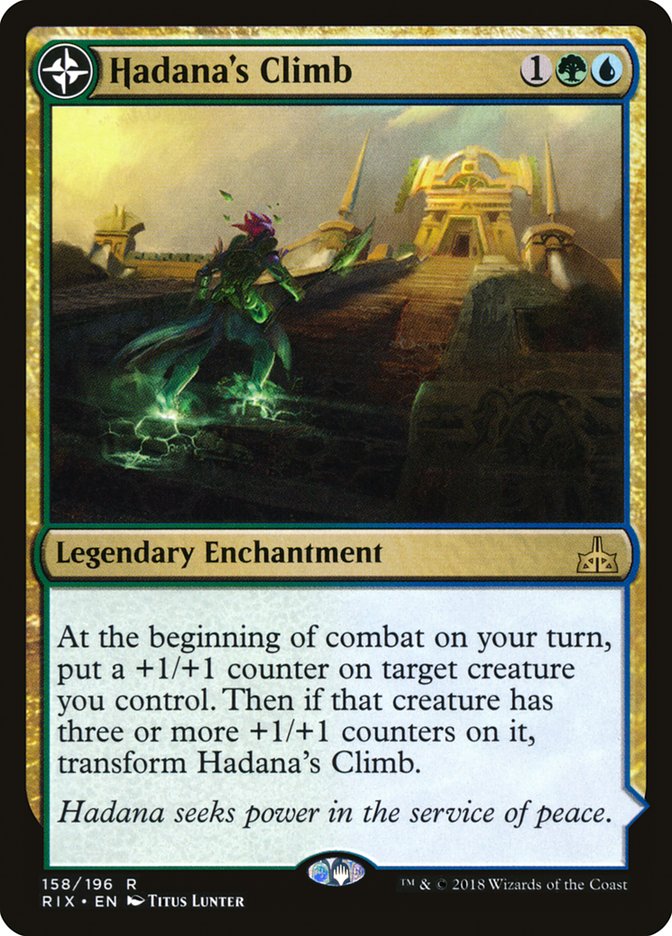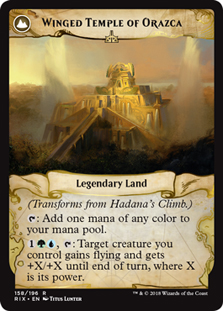Hello and welcome to the first Mox Insights report for the SCG Tour! For those of you who aren’t familiar with our work, we’re a data collective that has been working to take Magic data into the 21st century. We began published our data reports on Reddit’s r/spikes subforum, beginning with Grand Prix Atlanta and continuing through Grand Prix Portland and Grand Prix Oakland. We’re excited to continue this work for Star City Games and have big plans for the future. It might be a cliche in the community by this point, but we want to ask you to stay tuned.
For SCG Dallas, we’ve crunched the numbers to provide you all with a data-informed snapshot of the tournament. We’re going to take you through how the 64 Day 2 competitors arrived there and what happened when they did. We should be clear that this is a small sample size and it doesn’t tell you definitively where the metagame is moving. But after this report, we hope you have a better sense of the popular decks in Ravnica Allegiance Standard and how they tend to fare against each other so you can be best prepared for your next event.
So, what does this all look like? First, here are the matchups just on Day 2, or how and against what competitors in Day 2 did:

And for those Day 2 competitors over the course of the entire tournament:

As you can see, there’s not much divergence between these two and we don’t see the decks that didn’t make it to the second day of competition. Mono-Red Aggro might be the scourge of the Magic Arena queues, but it was totally absent from Day 2 of SCG Dallas. Temur Reclamation, Rakdos Midrange, and Mono-White Aggro also were extremely small sample sizes, so we did not include them. Mono-White deserves more attention, we feel, but Temur Reclamation seems not to be where the format is heading. So, pun intended, let’s dive in, starting with the trophy winner Robert Wagner-Krankel and his chosen archetype.
Mono-Blue Aggro
Spells (22)
- 4 Opt
- 3 Spell Pierce
- 3 Chart a Course
- 2 Dive Down
- 4 Curious Obsession
- 1 Blink of an Eye
- 4 Wizard's Retort
- 1 Essence Capture
Sideboard

If killing midrange decks is your game, Mono-Blue Aggro is your name. Mono-Blue fared extremely well against Sultai Midrange and assorted variants, capitalizing on the Week 1 success of Sultai Midrange and its centerpiece Hydroid Krasis. It also did well against Nexus of Fate decks, but what makes us most interested in the persistence of Mono-Blue Aggro in the format is how it did against a few matchups that have been inferred to be difficult for Mono-Blue, that of Esper Control, Izzet Drakes and Azorius Aggro (and its Mono-White variant). Splitting those matchups nearly evenly, it suggests that Mono-Blue isn’t a complete dog to them, especially to white aggressive strategies. The tech? Faerie Duelist was in a vast majority of these lists, offering an opportunity for Mono-Blue to seize tempo back from the white aggro players. Do not sleep on this deck, as it posted a great spread across the field.
Azorius Aggro
Creatures (29)
- 4 Ajani's Pridemate
- 4 Adanto Vanguard
- 3 Snubhorn Sentry
- 4 Benalish Marshal
- 4 Dauntless Bodyguard
- 4 Leonin Vanguard
- 4 Healer's Hawk
- 2 Deputy of Detention
Lands (20)
Spells (11)

And what of the predator of Mono-Blue Aggro, Azorius Aggro? Things were much harder for Azorius Aggro, especially at the hands of vengeful Sultai Midrange players looking to steamroll small creature decks. Wildgrowth Walkers were a tremendous problem for Azorius players, as we saw on camera over and over again at SCG Dallas, taking over the game unless successfully answered. Azorius players seemed to be caught between a rock and a hard place: as Sultai Midrange has cemented itself as the midrange deck of choice in the current format, Mono-Blue Aggro’s emergence has prioritized the necessity of cheap interaction, which is coincidentally also good against a deck also full of cheap, small creatures.
Azorius seemed most successful when leveraging token makers and tempoing out its opponents, but that’s a lot harder to do without the variety of interaction that Mono-Blue Aggro brings to the table. Azorius’s real strength was being able to hit hard against Nexus of Fate decks, so consider this if your local or anticipated metagame for your next tournament is one that involves many proxied Swamps.
Simic Nexus
Creatures (7)
Lands (26)
Spells (27)

Of all the Nexus of Fate decks, Simic Nexus seemed the most powerful on camera. As the format has begun to congeal into defined, successful archetypes, the Nexus of Fate decks are still sporting some diversity across their multiple iterations: Nexus of Gates, Simic Nexus, Bant Nexus. Of all of these, Simic Nexus seems the best-positioned moving forward. Why? While Nexus of Gates is often glacially slow to develop its mana and draws cards at sorcery speed, often tapping out to do so, and Bant Nexus must shock more than it might want to especially against aggressive decks like Mono-Blue and Azorius Aggro, Simic Nexus threads the needle.
It’s the Goldilocks of the Nexus decks: just right.
Not too many taplands, as instant speed as possible, with as little pain as needed – one Breeding Pool entering the battlefield untapped might be all the Simic Nexus player needs to be successful. While players anticipated Bant Nexus as being overwhelmingly powerful with the addition of Hallowed Fountain, it seems like Breeding Pool is the real winner here. Teferi, Hero of Dominaria looks rather unimpressive next to Wilderness Reclamation. John Johnson’s build in particular looks to draw from the Bant Nexus Fog plan just a little bit but emphasized a consistent team of enablers with Search for Azcanta and Chemister’s Insight. In a way, it reminds us of Ironworks decks in Modern: once the engine starts churning with Simic Nexus, the fail rate of the deck just diminishes turn after turn after turn. Don’t be surprised if this is the dominant Nexus of Fate deck by next weekend at Mythic Championship Cleveland.
Esper Control
Planeswalkers (4)
Lands (26)
Spells (30)
- 4 Absorb
- 3 Mortify
- 2 Negate
- 3 Vraska's Contempt
- 2 Search for Azcanta
- 2 Moment of Craving
- 1 Cast Down
- 3 Thought Erasure
- 2 Chemister's Insight
- 2 Precognitive Perception
- 2 Cry of the Carnarium
- 3 Kaya's Wrath
- 1 Warrant
Sideboard

Esper Control is a fine fit for this format’s control players. While we’ve heard that the Mono-Blue Aggro matchup is a favorable one for Esper players, SCG Dallas’s pairings seem to suggest it’s not as much of a slam dunk for Esper as people have anticipated. But if you enjoy playing Teferi, Hero of Dominaria, this was your deck. Other than that, though, we can’t advance a significant reason to play Esper Control. Sultai Midrange players seemed to overpower Esper, and the aggressive Azorius and Mono-Blue players were prepared to beat it. Esper Control’s best matchup was the weaker Esper Midrange, which is looking like one of those decks that will be discarded as the metagame firms up.
Sultai Midrange
Creatures (24)
- 4 Llanowar Elves
- 1 Hostage Taker
- 4 Wildgrowth Walker
- 4 Merfolk Branchwalker
- 4 Jadelight Ranger
- 2 Ravenous Chupacabra
- 4 Hydroid Krasis
- 1 Incubation Druid
Planeswalkers (4)
Lands (24)
Spells (8)
Sideboard

Bringing up the rear, and literally in eighth place, is Sultai Midrange. What is there to say about Sultai? A lot, actually. Smart Sultai players like Dylan Donegan will move cards around in response to the success of the deck. Hostage Taker looked excellent on camera all weekend long as a growing replacement for Ravenous Chupacabra. This Standard format’s axis looks to revolve not around Golgari Midrange mirrors for days and instead around the most efficient answers to seize tempo back, thanks to Mono-Blue Aggro picking up new threats and answers that play to its gameplan in Quench, Essence Capture, and Pteramander. But Sultai’s customizability on its tank-like core is a real strength, especially against aggro-heavy metagames. If people continue to pick up white aggressive decks, Wildgrowth Walker is ready. But there’s another way to build Sultai that holds some potential: Sultai Climb, which we’ll talk about later.
Temur Drakes
Creatures (13)
Lands (21)
Spells (26)

We want to take a brief look at Izzet Drakes before moving on from the major players in Standard. Izzet and this Temur variant from Jonathan Job will continue to have a place in the metagame because Niv-Mizzet, Parun is still looking for a home.
Those are the major players of this Standard format and how they match up against each other, but what about on the whole? Here are the win rates of the decks overall in the tournament against the format as a whole:

In this, we want to advance a theoretical idea of the “best deck” of the format as the one that occupies the sweet spot in the upper right of this chart: a deck with a high win rate and also a high share of the metagame percentage. Theoretically, a deck’s win rate should go down with popularity and reach closer to 50%; when it doesn’t, you should pay attention. Of course, that corner is where Mono-Blue Aggro sits. And at the bottom, at a much lower play rate, is Simic Nexus. Simic Nexus was the only deck to break a 60% win rate for the tournament.
While Simic Nexus is unlikely to be picked up by a large proportion of the population, it’s definitely made a splash. And what about the rest of the popular cluster? While they all weren’t as dominant as Mono-Blue Aggro, Azorius Aggro did better than middling with a large metagame share percentage. The polarity between the Azorius Aggro matchup and Sultai Midrange stands similar to (though assuredly not as drastic as) the Temur Energy and Mono-Red Aggro matchups of old Kaladesh Standard.
Azorius did fine to well against most of the field with the exception of Sultai. Sultai crushed Azorius to only doing fine against the rest of the field, with being vulnerable to Mono-Blue. Esper Control was the real loser of that cluster of popular decks. Despite finishing second in the tournament, it was in the basement of popular decks in terms of win rate.
As we mentioned earlier, Sultai Midrange might benefit from experimentation. The gulf between Sultai Midrange and Sultai Climb players was almost 10% in our sample. These are, of course, small numbers, but we believe it’s worth the experimentation to see if the Sultai Climb decks can close games quickly, especially as a trump in the mirror.
In closing, we want to remind people that this is just a snapshot of the tournament, especially focused on Day 2. We’ll be working to bring more and deeper snapshots of SCG Tour events to you in the coming days. We welcome any feedback in the comments and look forward to bringing you more Mox Insights.



